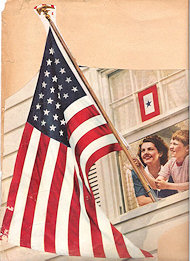Previous post

July 29, 2024
The longer the investigation goes on into the near-assassination of Donald Trump, the more it seems that the media has moved on from the event. After all, the entire dynamic of the presidential race has shifted and they are all in for Kamala Harris now!
Even Google is “mysteriously” disinterested in the Trump assassination attempt now.
lol Google pic.twitter.com/6CYXybecz7
— John LeFevre (@JohnLeFevre) July 28, 2024
It’s now caught the attention of Senator Robert Marshall (R-KS), who plans on asking Google what is going on with their search engine. But one media outlet that is still investigating the events from July 13th in Butler, Pennsylvania is – shockingly – the New York Times. Their Visual Investigations Team put together an excellent video that compiled all available video evidence (at that time) and did a minute-by-minute breakdown of the attempted assassination (which, of course, also was the cold-blooded murder of Corey Comperatore and the wounding of two other men besides Donald Trump).
And now, the NYT has received the text messages from local law enforcement that were exchanged on that day, which reveal that the shooter, Thomas Matthew Crooks, was identified as someone to be watched, and then as a potential threat, almost two hours before he shot anyone.
Nearly 100 minutes before former President Donald J. Trump took the stage in Butler, Pa., a local countersniper who was part of the broader security detail let his colleagues know his shift was ending.
“Guys I am out. Be safe,” he texted to a group of colleagues at 4:19 p.m. on July 13. He exited the second floor of a warehouse that overlooked the campaign rally site, leaving two other countersnipers behind.
Outside, the officer noticed a young man with long stringy hair sitting on a picnic table near the warehouse. So at 4:26 p.m., he texted his colleagues about the man, who was outside the fenced area of the Butler Fair Show grounds where Mr. Trump was to appear. He said that the person would have seen him come out with his rifle and “knows you guys are up there.”
The countersniper who sent the texts confirmed to The New York Times that the individual he saw was later identified as the gunman.
Taken together, the text messages provide the most detailed picture yet of the hours before the assassination attempt. They reveal that the gunman, later identified as Thomas Crooks, 20, of Bethel Park, Pa., aroused police suspicion more than 90 minutes before the shooting, rather than about 60 minutes, as has been previously discussed in congressional hearings.
The messages also add to the evidence that the would-be assassin was often one step ahead of security forces, and in particular the Secret Service.
Mr. Crooks scoped out the rally site a day before the Secret Service did. He used a drone to survey the site while the Secret Service did not seek permission to use one for the rally. He researched how far Lee Harvey Oswald was from John F. Kennedy when he fatally shot the president in 1963 — the answer is about 265 feet — and managed to climb onto a roof that was about 400 feet from Mr. Trump at its closest point. The Secret Service left that roof unmanned.
And while countersnipers were assigned to surveil the rally, Mr. Crooks was also in a position to watch them.
What we are learning from this NYT report is simply building on top of what we already knew, to some extent. The Secret Service was not “mailing it in” when it came to security, but they were definitely expecting local law enforcement to pick up their slack. The problem, of course, is that local law enforcement didn’t have enough personnel to pick up that slack. This created open holes in security that Crooks essentially waltzed through. A picture is now emerging of Crooks within the media of a loner who was looking for a way to become instantly famous, or infamous. In other words, a John Hinckley.
Mr. Crooks had started searching online for information on famous people, including the F.B.I. director, Christopher A. Wray, Attorney General Merrick B. Garland, President Biden and Mr. Trump. He also looked up “major depressive disorder.”
On July 3, Mr. Trump’s campaign announced the rally in Butler for 10 days later, and Mr. Crooks narrowed his focus to the former president — and to past assassinations.
On July 6, Mr. Crooks typed in an ominous phrase.
“He did a Google search for ‘How far away was Oswald from Kennedy?’” Mr. Wray told a congressional committee last week.
The next day, Mr. Crooks drove to the farm show grounds, about an hour from his home. He spent 20 minutes there, investigators said. He also registered to attend the rally.
Secret Service agents would not hold their first walk-through until the following day, July 8, joined by law enforcement officials from several local and state agencies.
It was then that the Secret Service decided to exclude the entire warehouse complex owned by AGR, including Building No. 6, which Mr. Crooks would later use, from its inner security perimeter. This meant that on the day of the rally, Mr. Crooks was able to approach the building without passing through security screening.
After their walk-through, the Secret Service had asked local agencies to provide more help. Text messages show that Beaver County struggled to find enough volunteers to cover the 12-hour shift. A leader says that one of the available snipers could arrive at 8 a.m. but would need to leave by 4 p.m.
“That works,” another leader responded in the texts.
And that sniper who needed to leave by 4 pm was apparently the one who sounded the warning that Crooks was scoping out the buildings, and knew where the sniper teams was located, and that they weren’t on the roof, but inside the building. As the police attempted to locate him – by all accounts woefully short of bodies on the ground – we know that the Secret Service was informed about Crooks well before Trump went on stage.
A Beaver County countersniper shared two photos of Mr. Crooks with his colleagues at 5:38 p.m., which were then relayed to the Secret Service, through a series of steps in the command center.
One of the two remaining countersnipers “ran out of the building attempting to keep eyes on Crooks until other law enforcement arrived,” according to a statement by Richard Goldinger, the Butler County district attorney, who supervises some of the law enforcement units.
But Mr. Crooks ran off, taking a backpack with him, Mr. Goldinger said. When the officer was unable to find Mr. Crooks, he returned to his post.
Four Butler Township police officers who had been directing traffic joined the manhunt.
At 6 p.m., one officer in the group texts guessed that Mr. Crooks was moving toward the back of the complex of AGR buildings, “away from the event.” Instead, Mr. Crooks clambered onto the low-slung building in the complex closest to the stage.
Mr. Trump took the podium at 6:03 p.m., to a roaring crowd.
And here we reach the real question. Who decided to let Donald Trump take the stage at 6:03 pm that evening, KNOWING that Crooks was on the move and law enforcement had not been able to locate him? Why did they just assume that he was moving “away from the event” with no visual evidence to back up that assertion? How does this make any sense? There’s a potential threat who has been seen acting strangely, using a range finder, disappearing and reappearing, and the event didn’t even have a ten-minute delay in order to locate the threat? Remember, the now-former director of the Secret Service, Kimberly Cheatle, claimed that her people didn’t believe that there was a threat, despite the Secret Service countersnipers being warned. So the rally was not paused.
Kimberly Cheatle is shown footage of Trump rally goers pointing to the shooter on the roof.
She then attempts to explain how the Secret Service were not aware that there was a threat to President Trump and why the rally was never paused.
This is a crazy clip pic.twitter.com/gsmbSBywrl
— Greg Price (@greg_price11) July 22, 2024
According to Donald Trump’s Secret Service detail, they were not told that there was a threat. And Trump himself has said that if he had been told there was a threat, he would not have gone on stage.
Members of the Secret Service detail that protects Trump and was with him backstage have complained to confidants and others inside the agency that they were never made aware of that warning, said three people who spoke on the condition of anonymity to describe sensitive conversations about that day. They also said they were not aware that the local countersnipers eventually lost track of Crooks, or that another local officer — hoisted up to the roof of a building just outside the rally site’s security perimeter — saw Crooks perched there with a gun.
Some of Trump’s top advisers, in a large white tent behind the stage where Trump was speaking, thought the spray of bullets was fireworks, two people said, and did not immediately dive to the ground. According to the two people, Trump advisers said that they first learned of any issue when the shots were fired, and that they could not understand why the suspicious-person alert hadn’t been passed on to them so they could consider delaying Trump’s speech — a sentiment Trump echoed in a TV interview.
“Nobody mentioned it. Nobody said there was a problem,” the former president said in an interview that aired Monday on Fox News. “They could’ve said, ‘Let’s wait for 15 minutes, 20 minutes, five minutes,’ something. Nobody said — I think that was a mistake.”
It’s clear the Secret Service is not prepared to answer questions about who knew what and when.
Secret Service spokesman Anthony Guglielmi said Saturday that the agency was declining to comment on The Washington Post’s questions about which radio communications Trump’s security detail received at the Butler, Pa., rally. He repeated that the agency is examining everything about the incident, including whether there might have been a communication breakdown among its staff or other law enforcement, to determine precisely what happened.
“As it relates to communications at the rally, the Secret Service is committed to better understanding what happened before, during, and after the assassination attempt of former President Trump to ensure that never happens again,” Guglielmi said in a statement. “That includes complete cooperation with Congress, the FBI and other relevant investigations.”
Kimberly Cheatle has resigned (when she should have been fired), but that isn’t enough. The Secret Service is tasked with protecting high-value targets, but we have known for a while that the agency has had problems – witness the cover-up involved with the Biden dog attacks that physically injured Secret Service agents, which took FOIA requests to uncover. How are we supposed to believe that the agency has the capacity to plan to protect ANY of their protectees, when we still don’t know who let Donald Trump go onstage that day in Butler?
Remember, Trump barely avoided being killed, Corey Comperatore WAS killed, and two men were severely injured. Who answers for the failures that led to Comperatore’s murder? The Secret Service? Local law enforcement? WHO? Where, precisely, does the buck stop when someone dies?
Featured image: original Victory Girls art by Darleen Click
No direct field communications between agency and local law and no designated Commanders,is it true that Homeland Security personnel were filling in for SS?
Can we please stop posting that guy’s picture? And just call him “shooter” after using his name once. Let’s make sure he doesn’t gain the publicity that might nudge other losers toward pursuing the same goal.

Tip Us!
Become a Victory Girl!


Follow Us On Twitter!


Recent Comments

Rovin’ Redhead

2 Comments